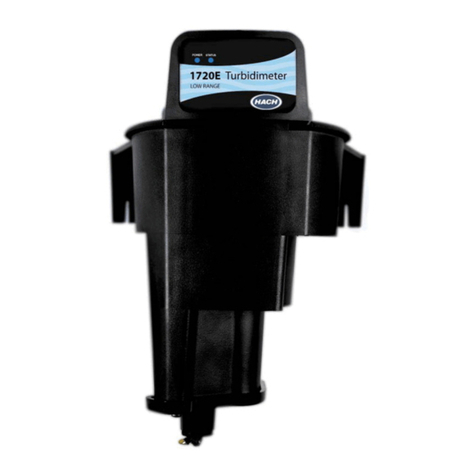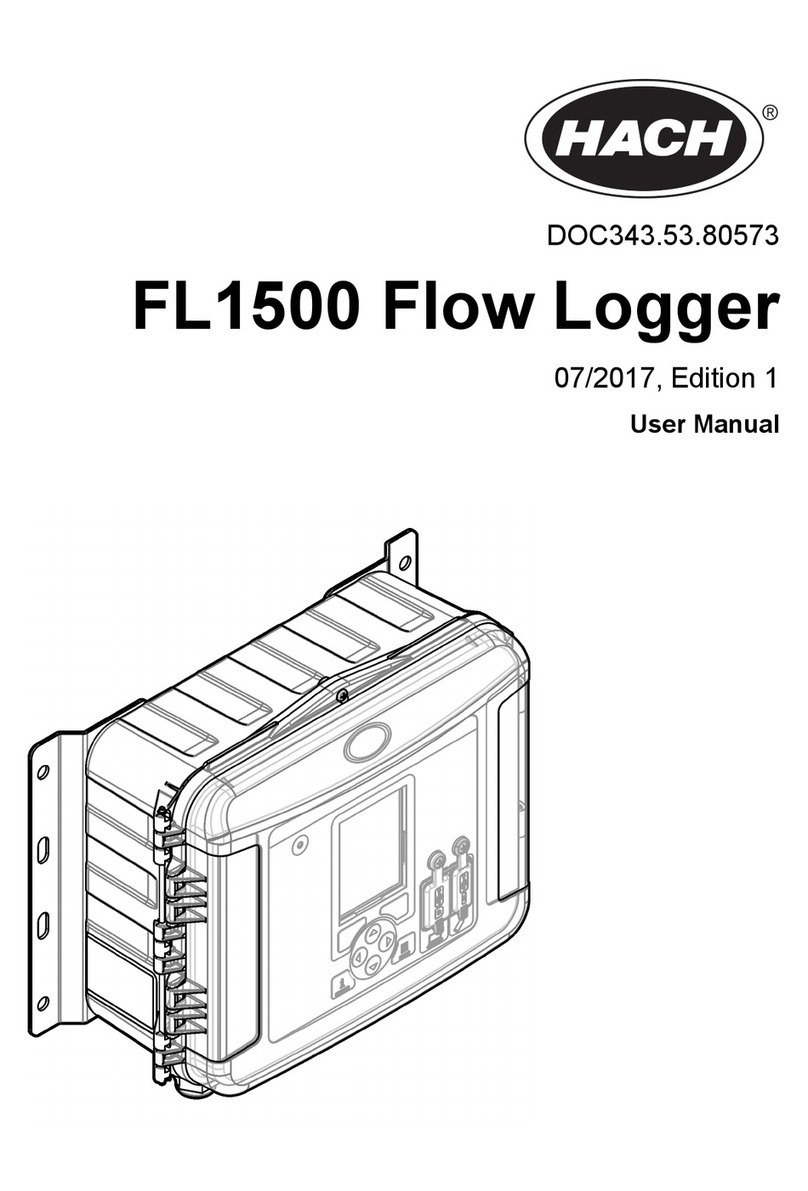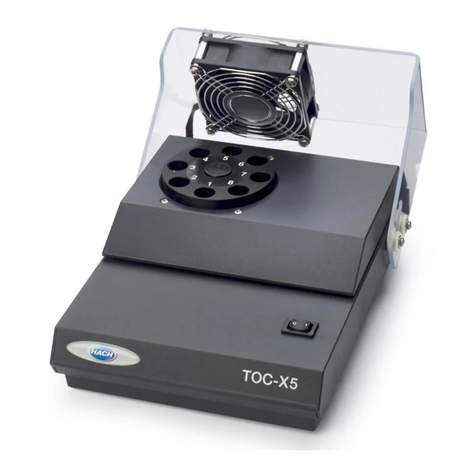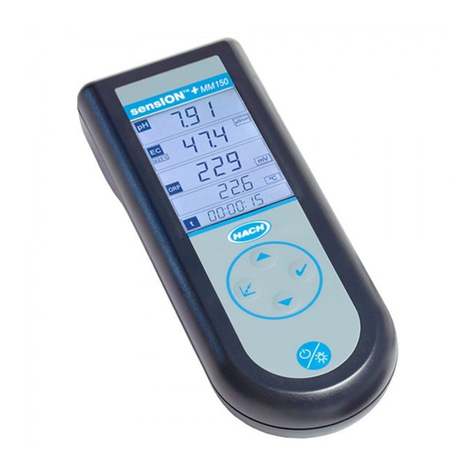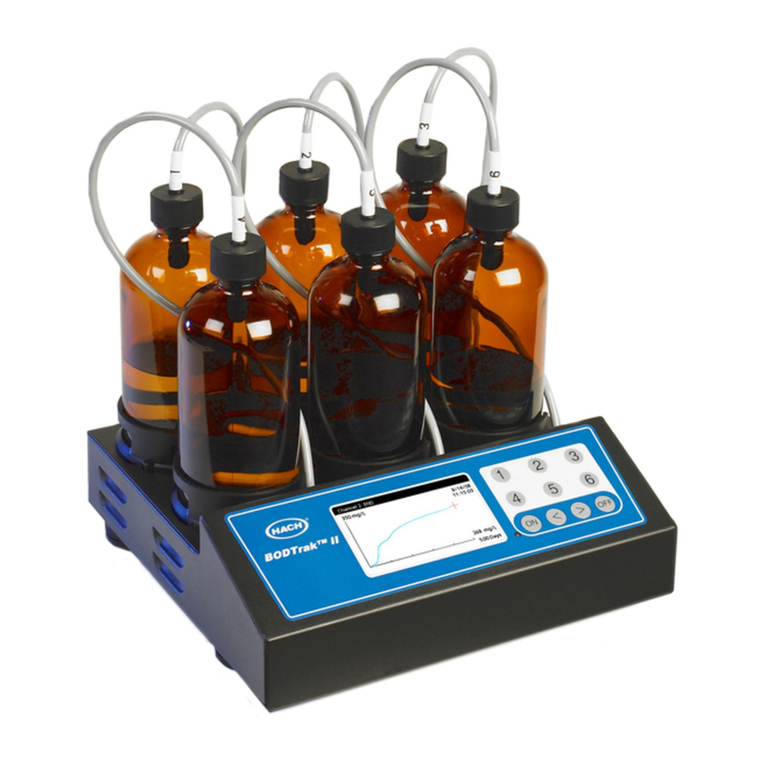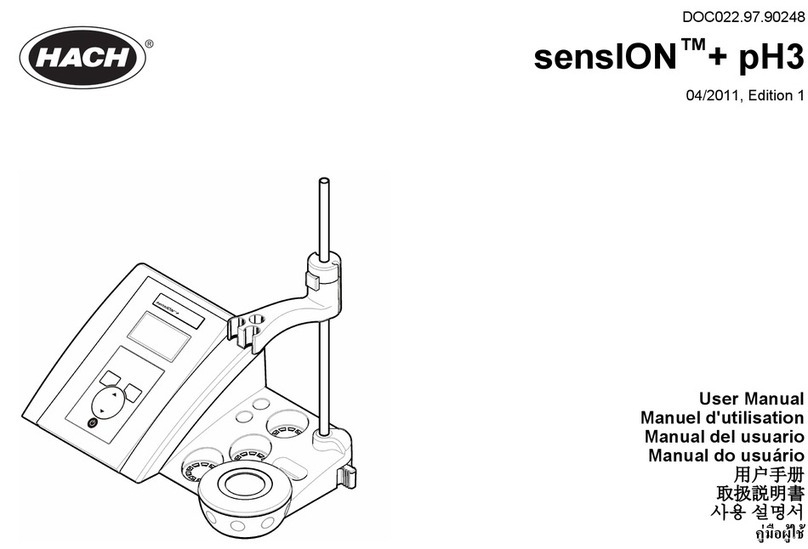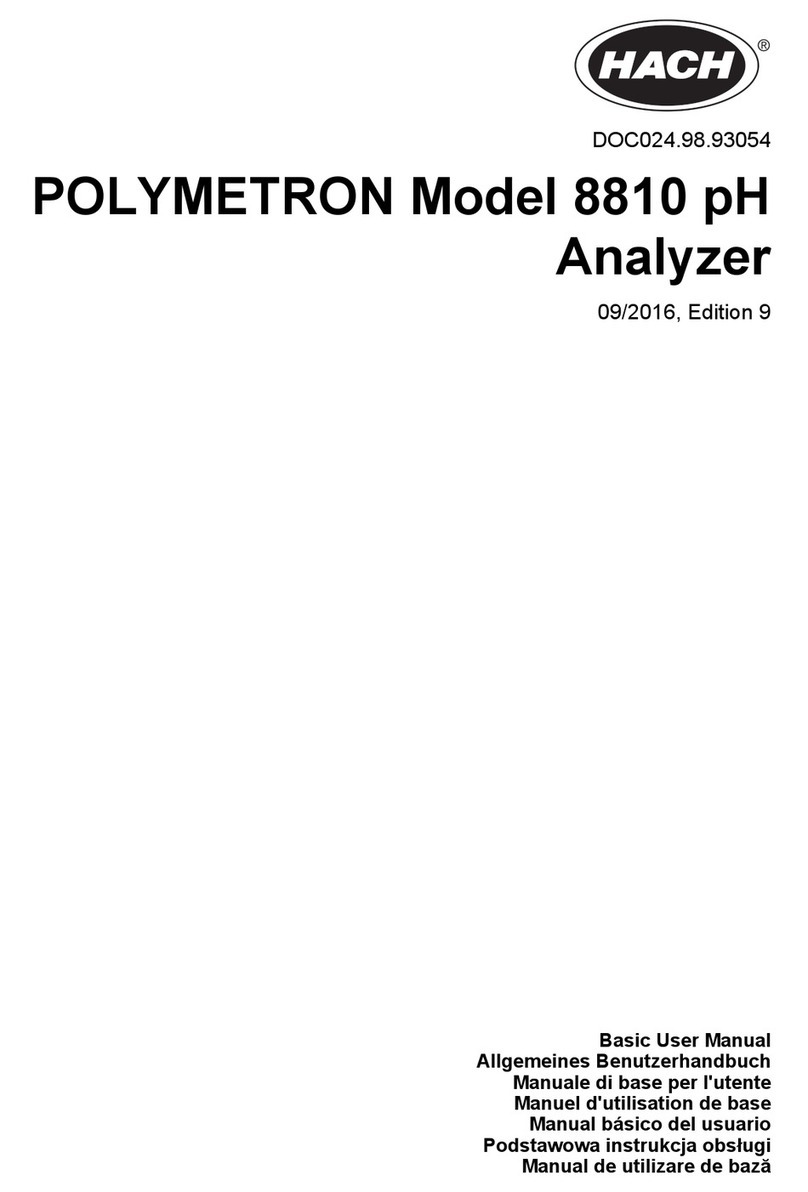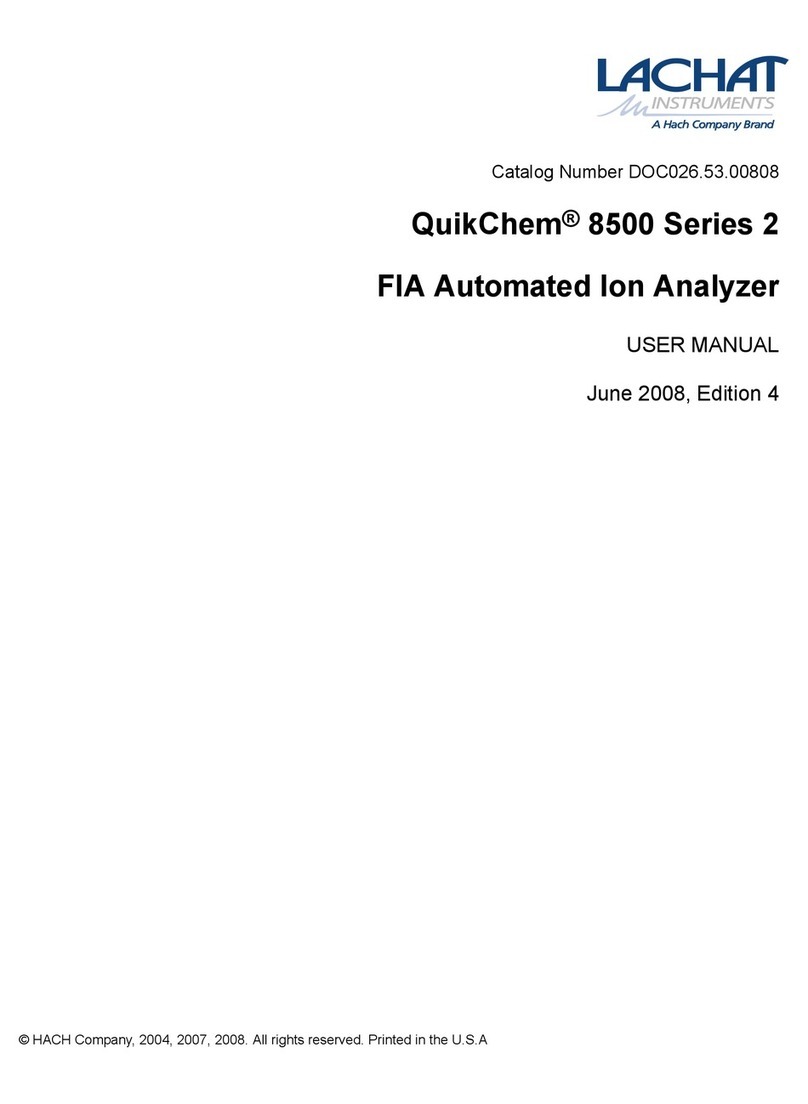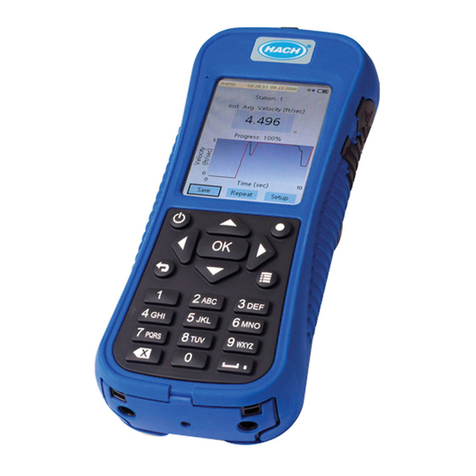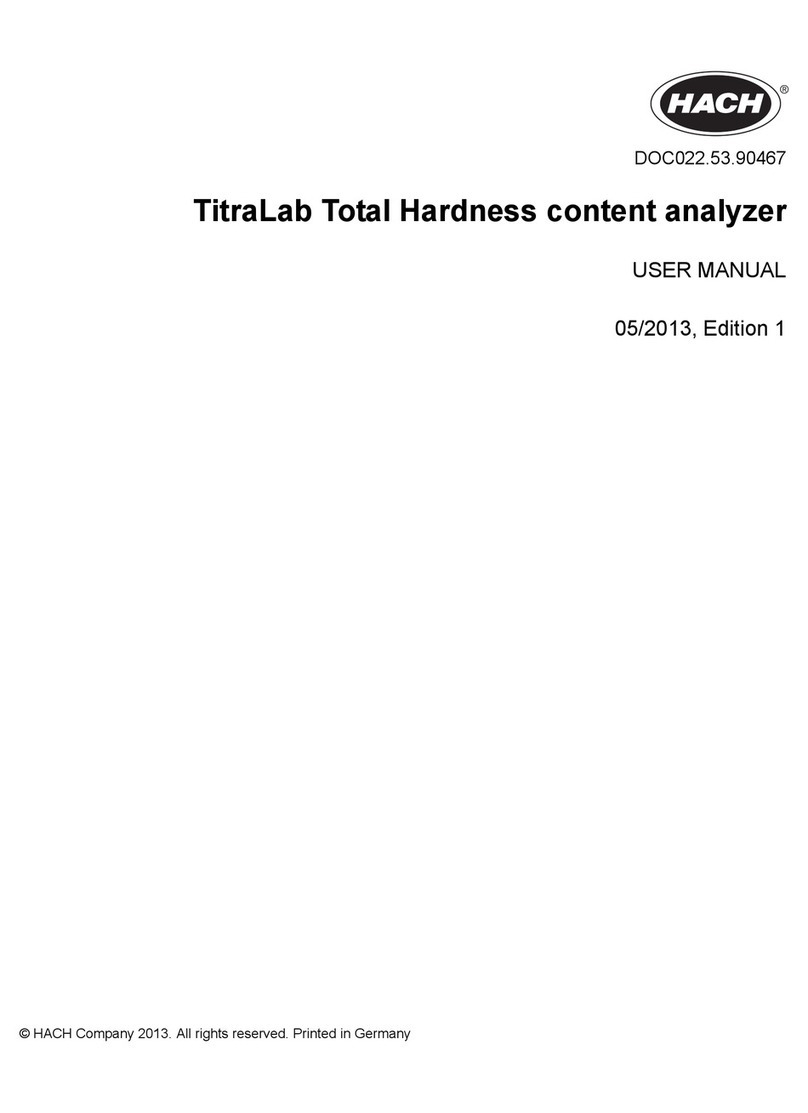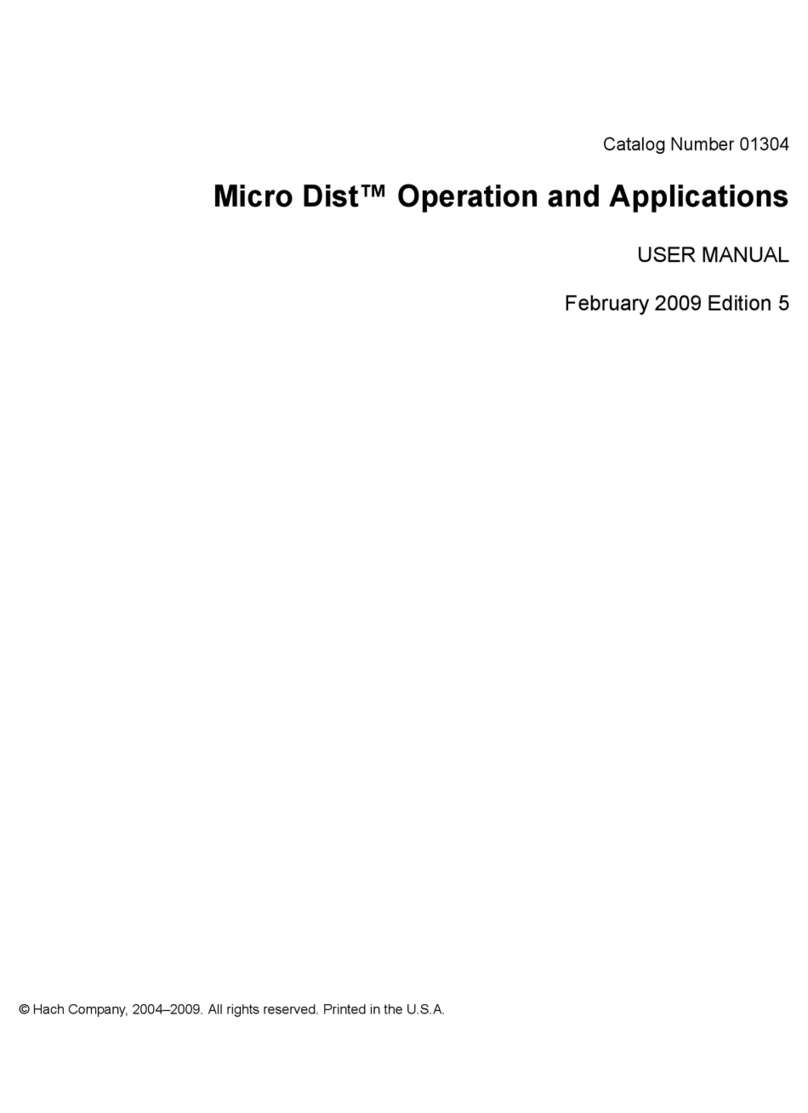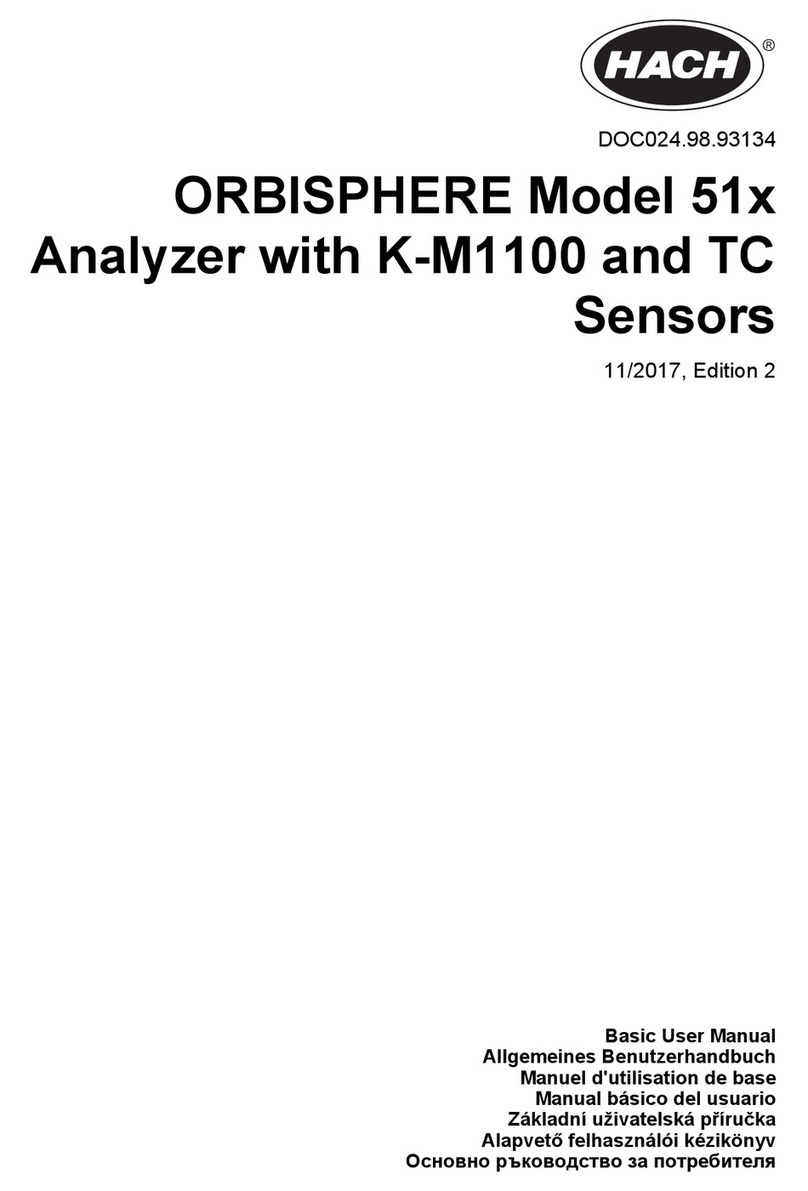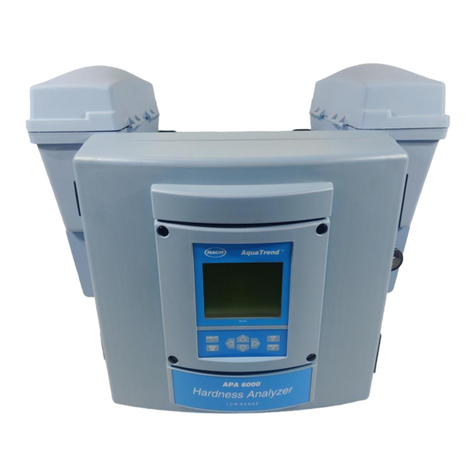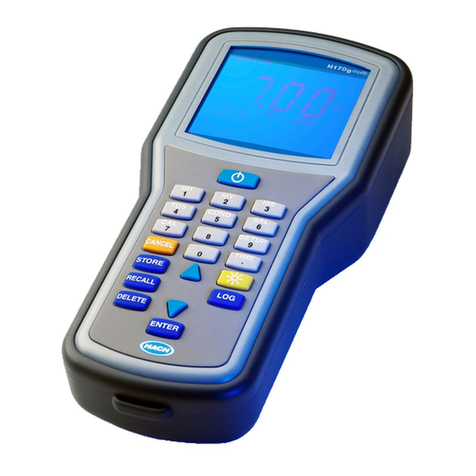
10 DOC272.53.80026
.
6. If prompted, enter a name for the new method settings. Additional changes made to
the settings of an existing method are automatically saved with the same method
name.
7. Push EXIT until the meter returns to the measurement mode.
Change calibration options
1. Make sure an electrode is connected to the meter.
2. Push the METER OPTIONS key and select (MTC301) Settings.
3. Select Modify Current Settings.
4. Select Calibration Options.
5. Update the settings. Refer to Table 4.
Table 3 Measurement options settings
Setting Options Description
Response time Fast
Medium (default)
Slow
The response time affects the speed of the measurement by
adjusting the stabilization criteria.
Fast: 2 mV/min
Medium: 1 mV/min
Slow: 0.5 mV/min
Measurement limits
Lower limit (default: -1200.0
mV)
Upper limit (default: 1200.00
mV)
The measurement limits can be set to match the acceptable
values for the sample. When the measurement is above the
upper limit setting or below the lower limit setting, the meter
will show an "Out of limits" message.
This message is an alert to a potential problem with process
conditions.
Table 4 Calibration options settings
Settings Option Description
Standard ZoBell’s (221mV -- 25ºC)
Light’s (468mV -- 25 ºC)
Custom
Temperature compensated for ZoBell’s
solution.
Standard values will appear on
Calibration Options screen.
Light’s solution is characterized at 25
ºC. Custom standard values and
temperature are user defined.
Calibration reminder
Reminder repeat: Off (default), 1 d, 7 d, 30 d Meter will make an audible sound when
calibration is due. and repeat the sound
at selected interval.
Expires: Immediately, Reminder + 30 min,
Reminder + 1 hr, Reminder + 2 hr, Continue
Reading
Calibration expires after a specified
time.
Note: The meter cannot be used to read
samples after calibration has expired
unless Continue Reading is selected.

